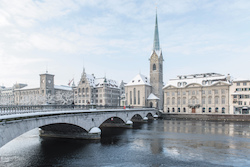Speaker
Mr
Yasuhito Naoshima
(Department of Applied Chemistry, Meiji University, Japan)
Description
Various gaseous species such as H2O, CO, CO2, CH3OH, H2CO, and NH3 are condensed onto dust grains in interstellar molecular clouds. The H2O ice, which is formed by vapor deposition onto the dust grains under low temperature and pressure conditions, is amorphous ice. The amorphous ice includes various gas molecules, and the molecules undergo chemical evolutions to organic molecules through various processes [1]. Thus, the structure and properties of amorphous ice including gas molecules are important factors to understand the molecular evolution of organic molecules [2]. To investigate the effects of included gas molecules on the structure and properties of amorphous ice, the molecular dynamics (MD) calculations of amorphous ice including CO2 and CO were performed.
We used an interatomic potential model (KAWAMURA potential model) for the MD simulations [3]. The amorphous ice was prepared by quenching of a liquid phase consisting of 368 water molecules and n CO2 molecules (n = 1–64) from 300 K to 200 K with 1.0 K/fs in cooling rate. After annealing at 200 K, the system was cooled to 60 K with 1.0 K/fs. The density of the system at 60 K was controlled with the time period of the annealing at 200 K. The amorphous ice including CO molecule was prepared by replacing a CO2 molecule with CO at 60 K.
The result showed that the CO2 molecules form a cluster when n ≥ 10, whereas CO2 exists as an isolated molecule in H2O ice. The calculations of the running coordination number (rcn) of water molecules around gases showed that the density of H2O ice with an isolated CO2 molecule is smaller than that of pure amorphous ice, and the density decreases with increase in n. On the other hand, the density of H2O ice with a CO2 cluster is larger than that of pure ice and the density increases with increase in n. To investigate the mechanism of the density increase, the vibrational density of states were calculated. The results showed that H2O ice with CO2 cluster has peaks at around 3550 cm-1, which are assigned to the stretching modes of the dangling bonds in the H2O-CO2 interface. This suggests that the increase in the interface area (i.e., decrease in number of hydrogen bonds) causes the density increase in ice matrix with CO2 cluster. The calculation showed that the isolated CO also has effect to decrease the density of ice matrix. From these results, we discuss the effects of gas inclusions on structure of amorphous ice.
References
[1] A. Kouchi, T. Yamamoto, T. Kuroda, J. M. Greenberg, 1994, Astron. Astrophys. 290, 1009.
[2]. Y. Kumagai, T. Ikeda-Fukazawa, 2017, Chem. Phys. Lett. 678, 153.
[3] N. Kumagai, K. Kawamura, T. Yokokawa, 1994, Mol. Simul. 12, 177.
Significance statement
Molecular dynamics simulations of amorphous ice including CO2 and CO were performed. The results showed that CO2 and CO has effects to change the density of surrounding ice matrix. From these results, we discuss the effects of gas inclusions on structure of amorphous ice.
Primary author
Mr
Yasuhito Naoshima
(Department of Applied Chemistry, Meiji University, Japan)
Co-author
Prof.
Tomoko Ikeda-Fukazawa
(Department of Applied Chemistry, Meiji University, Japan)

